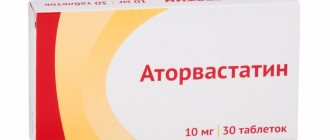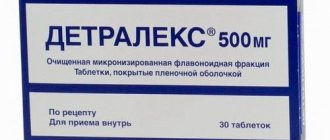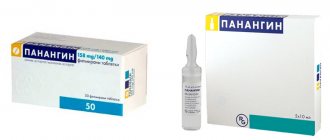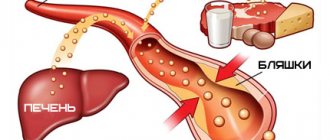Simvastatin
Myopathy/Rhabdomyolysis
Simvastatin, like other HMG-CoA reductase inhibitors, in rare cases causes myopathy, the symptoms of which are muscle pain, soreness or weakness in combination with an increase in creatine phosphokinase (CPK) activity more than 10 times the upper limit of normal (ULN) . Myopathy sometimes takes the form of rhabdomyolysis with or without acute renal failure due to myoglobinuria, in very rare cases with death. The risk of myopathy increases with increasing levels of HMG-CoA reductase inhibitory activity in the blood plasma (in particular, with increasing levels of simvastatin or simvastatin hydroxy acid in the blood plasma), which may be due in part to drugs that enter into drug interactions and, as a result, affect on the metabolism and/or transporters of simvastatin (see section Interactions with other drugs).
As with other HMG-CoA reductase inhibitors, the risk of myopathy/rhabdomyolysis is dose dependent. In a clinical trial database of 41,413 patients receiving simvastatin, the incidence of myopathy was approximately 0.03%, 0.08%, and 0.61% with simvastatin doses of 20, 40, and 80 mg/day, respectively.
In a clinical study in which patients with a history of myocardial infarction received simvastatin 80 mg/day (mean follow-up 6.7 years), the incidence of myopathy was approximately 1.0% compared with 0.02%) in patients receiving the drug at a dose of 20 mg/day. In approximately half of these cases, myopathy developed during the first year of treatment. The incidence of myopathy during each subsequent year of treatment was approximately 0.1% (see Pharmacodynamics and Side Effects).
Patients receiving simvastatin 80 mg are at higher risk of developing myopathy than other statin-based therapies with similar LDL-C lowering efficacy. Therefore, at a dose of 80 mg, Simvastatin should be used only in patients with severe hypercholesterolemia and a high risk of cardiovascular complications in whom treatment goals have not been achieved at lower doses and the expected benefits outweigh the potential risks. In patients receiving simvastatin 80 mg and requiring another drug that may have a drug interaction, a lower dose of simvastatin or an alternative regimen using another statin with less potential for drug interactions should be used (see Interventions) . reducing the risk of myopathy caused by drug interactions
and sections Method of administration and dosage; Contraindications; Interaction with other drugs).
In a clinical trial in which patients at high risk of cardiovascular disease received simvastatin 40 mg/day, the incidence of myopathy was approximately 0.05% in non-Chinese patients (n = 7367) compared with 0.24% in Chinese patients (n = 5468). Although the only Mongoloid population evaluated in this clinical study was the Chinese, caution should be exercised when prescribing simvastatin to Mongoloid patients and use the lowest dose necessary.
Decreased function of transport proteins
Decreased function of the liver OATP transport proteins may lead to increased systemic exposure of the hydroxy acid simvastatin and an increased risk of myopathy and rhabdomyolysis. A decrease in function may develop due to inhibition by drugs that interact with drugs (for example, cyclosporine), or in patients who are carriers of the c.521T>C polymorphism of the SLCO1B1 gene.
Patients with the c.521T>C allelic variant of the SLCO1B1 gene produce a less active OATP1B1 protein, and there is an increase in systemic exposure to the hydroxy acid simvastatin and an increased risk of myopathy. The risk of developing myopathy associated with high-dose simvastatin (80 mg) is generally 1% in the absence of genetic testing. Based on the results of the SEARCH study, carriers of the homozygous C allele (CC) who received 80 mg of the drug had a 15% risk of developing myopathy within a year, while in carriers of the heterozygous C allele (CT) the risk was 1.5%. The corresponding risk in patients with the most common genotype (TT) was 0.3% (see Pharmacokinetics). Whenever possible, genotyping for the presence of the C allele should be considered as part of the benefit-risk assessment before prescribing simvastatin 80 mg in individual patients, and high doses should be avoided in carriers of the CC genotype. At the same time, the absence of this gene during genotyping does not exclude the likelihood of developing myopathy.
Assessment of creatine phosphokinase activity
Assessment of creatine phosphokinase (CPK) activity should not be performed after intense exercise or when there is any plausible alternative cause for increased CPK activity, as this makes interpretation of the values difficult. If CK activity at baseline was significantly elevated (>5 x ULN), it should be assessed after 5-7 days to confirm the results.
Before treatment
When initiating or increasing the dose of simvastatin, all patients should be warned of the risk of myopathy and to promptly report any unexplained pain, tenderness, or muscle weakness.
Caution should be exercised when prescribing the drug to patients with predisposing factors to the development of rhabdomyolysis. In the following situations, CPK activity should be assessed before starting therapy in order to determine reference baseline values:
— old age (≥ 65 years);
- female;
- renal dysfunction;
- uncontrolled hypothyroidism;
— the patient’s or family history of hereditary muscle diseases;
- history of toxic effects of statins or fibrates on muscles;
- alcohol abuse.
In such situations, the benefit-risk ratio of treatment should be assessed, and clinical observation is recommended. If the patient has previously experienced muscle damage during fibrate or statin therapy, another drug in these classes can be prescribed only with caution. If there is a significant initial increase in CPK activity (> 5 x ULN), treatment should not be started.
During treatment
If pain, muscle weakness or cramps occur during statin therapy, CPK activity should be assessed. If a significant increase in CK activity is detected (> 5 x ULN) in the absence of intense physical activity, treatment should be discontinued. If muscle symptoms are severe and cause daily discomfort, discontinuation of treatment may be considered, even if there is no increase in CPK activity <5 x ULN. If myopathy is suspected for any other reason, treatment should be discontinued.
There are very rare reports of immune-mediated necrotizing myopathy (IONM) during or after treatment with certain statins. Clinically, IONM is characterized by persistent proximal muscle weakness and increased serum creatine phosphokinase activity, which persists despite cessation of statin therapy (see Side Effects).
If symptoms resolve and CPK activity returns to normal, consideration may be given to resuming statin therapy or to prescribing another statin at a minimal dose under close monitoring.
A higher incidence of myopathy was observed in
patients in whom the dose was increased to 80 mg (see Pharmacodynamics). Periodic assessment of CPK activity is recommended as it may be useful in identifying subclinical cases of myopathy. At the same time, there is no certainty that such control will prevent the development of myopathy.
Simvastatin therapy should be temporarily discontinued several days before major elective surgery and when severe conditions requiring medical or surgical intervention develop.
Measures to reduce the risk of myopathy caused by drug interactions (see Interactions with other drugs)
The risk of myopathy and rhabdomyolysis increases significantly when simvastatin is co-administered with strong CYP3A4 inhibitors such as itraconazole, ketoconazole, posaconazole, voriconazole, erythromycin, clarithromycin, telithromycin, HIV protease inhibitors (eg, nelfinavir), boceprevir, telaprevir, nefazodone, drugs containing cobicistat, as well as gemfibrozil, cyclosporine and danazol. The use of these drugs together with simvastatin is contraindicated (see Contraindications).
The risk of developing myopathy and rhabdomyolysis also increases when amiodarone, amlodipine, verapamil or diltiazem is used concomitantly with certain doses of simvastatin (see Dosage and Administration; Interactions with Other Drugs). The risk of myopathy, including rhabdomyolysis, may increase with concomitant use of fusidic acid and statins (see Interactions with Other Drugs). In patients with homozygous familial hypercholesterolemia, this risk may be increased when lomitapide is used concomitantly with simvastatin.
Therefore, with regard to CYP3A4 inhibitors, the use of simvastatin with itraconazole, ketoconazole, posaconazole, voriconazole, HIV protease inhibitors (eg, nelfinavir), boceprevir, telaprevir, erythromycin, clarithromycin, telithromycin, nefazodone and medicinal products containing cobicistat is contraindicated (see section 4.4). Contraindications; Interaction with other drugs). If the use of strong CYP3A4 inhibitors (drugs that increase AUC by approximately 5-fold or greater) cannot be avoided, simvastatin therapy should be temporarily discontinued (and a different statin considered) for the duration of treatment. Moreover, caution must be exercised when combining simvastatin with other less potent CYP3A4 inhibitors: fluconazole, verapamil, diltiazem (see Dosage and Administration; Interactions with Other Drugs). The simultaneous use of simvastatin and grapefruit juice should be avoided.
Concomitant use of simvastatin and gemfibrozil is contraindicated (see Contraindications). Due to the increased risk of myopathy and rhabdomyolysis in patients receiving simvastatin together with other fibrates, with the exception of fenofibrate, the dose of simvastatin should not exceed 10 mg per day (see Dosage and Administration; Interactions with Other Drugs). Caution should be exercised when prescribing fenofibrate and simvastatin, since each of these drugs itself can cause the development of myopathy.
Simvastatin should not be co-administered with systemic fusidic acid or used within 7 days of finishing treatment with fusidic acid. If the use of fusidic acid is necessary, statin therapy should be suspended for the entire period of fusidic acid treatment. There are reports of cases of rhabdomyolysis (including fatal cases) in patients receiving a combination of fusidic acid and statins (see Interactions with other drugs). The patient should be advised to consult a doctor immediately if any symptoms such as pain, tenderness or muscle weakness develop. Statin therapy can be resumed seven days after the last fusidic acid dose. In exceptional situations where long-term systemic therapy with fusidic acid is necessary, for example in severe infections, the advisability of simultaneous use of simvastatin and fusidic acid should be assessed on a case-by-case basis and under close medical supervision.
The combined use of simvastatin in doses exceeding 20 mg per day with amiodarone, amlodipine, verapamil or diltiazem should be avoided. In patients with homozygous familial hypercholesterolemia, the combined use of simvastatin in doses exceeding 40 mg per day with lomitapide should be avoided (see Dosage and Administration; Contraindications; Interactions with other drugs).
Patients taking other medicinal products with moderate inhibitory effects on CYP3A4 concomitantly with high-dose simvastatin may have an increased risk of developing myopathy. When simvastatin is used concomitantly with moderate CYP3A4 inhibitors (drugs that increase AUC by approximately 2-5 times), a dose adjustment of simvastatin may be required. For some moderate CYP3A4 inhibitors, such as diltiazem, the maximum recommended dose of simvastatin is 20 mg (see Dosage and Administration).
Simvastatin is a substrate of the Breast Cancer Resistant Protein (BCRP) efflux transporter. Concomitant use of drugs that are BCRP inhibitors (such as elbasvir and grazoprevir) may lead to increased plasma concentrations of simvastatin and an increased risk of myopathy. Therefore, consideration should be given to adjusting the dose of simvastatin depending on the prescribed dose. Concomitant use of elbasvir and grazoprevir with simvastatin has not been studied; in patients who are simultaneously receiving drugs containing elbasvir and grazoprevir and simvastatin, the dose of simvastatin should not exceed 20 mg per day
(see Interactions with other drugs).
Rare cases of myopathy/rhabdomyolysis have been associated with the concomitant use of HMG-CoA reductase inhibitors and lipid-lowering doses (≥ 1 g/day) of niacin (nicotinic acid), each of which alone can cause myopathy.
In a clinical trial (median follow-up 3.9 years) in patients at high risk of cardiovascular disease with well-controlled LDL-C levels, treatment with simvastatin 40 mg/day with or without ezetimibe 10 mg showed no additional benefit in regarding cardiovascular outcomes with the addition of niacin (nicotinic acid) at lipid-lowering doses (≥ 1 g/day).
Therefore, clinicians considering combination therapy with simvastatin with lipid-lowering doses (≥ 1 g/day) of niacin (nicotinic acid) or niacin-containing products should carefully weigh the potential benefits and risks and closely monitor patients for any signs and symptoms symptoms in the form of pain, soreness or weakness in the muscles, especially in the first months of therapy and when the dose of any of the drugs is increased.
Additionally, in this study, the incidence of myopathy was approximately 0.24% in Chinese patients receiving simvastatin 40 mg or ezetimibe/simvastatin 10/40 mg, compared with 1.24% in Chinese patients receiving simvastatin 40 mg or ezetimibe/simvastatin 10/40 mg together with nicotinic acid/lamopiprant modified release 2000 mg/40 mg. Although the only Mongoloid population evaluated in this clinical study was Chinese, given the higher incidence of myopathy in Chinese patients compared to non-Chinese patients, concomitant use of simvastatin with niacin (niacin) at lipid-lowering doses (≥ 1 g/day) It is not recommended for patients of the Mongoloid race (see Interaction with other drugs). Acipimox is structurally related to niacin. Although acipimox has not been studied, the risk of muscle toxicity may be similar to that of niacin.
Daptomycin.
With the simultaneous use of HMG-CoA reductase inhibitors and daptomycin, reports of the development of myopathy and/or rhabdomyolysis have been received. Caution should be exercised when prescribing HMG-CoA reductase inhibitors concomitantly with daptomycin, because any of these agents, when used alone, can cause myopathy and/or rhabdomyolysis. Temporary suspension of the use of Simvastatin should be considered in patients taking daptomycin (see Interactions with Other Drugs).
Effect on the liver
In clinical studies, persistent increases in serum transaminase activity (up to > 3 x ULN) were observed in a small number of adult patients receiving simvastatin. When simvastatin therapy was discontinued or temporarily discontinued in these patients, transaminase activity usually decreased slowly to the level observed before treatment. It is recommended to assess liver function before starting treatment and then when clinically indicated. In patients whose dose was increased to 80 mg, liver function should be further assessed before the dose increase, 3 months thereafter, and periodically thereafter (eg, once every six months) during the first year of treatment. Particular attention should be paid to patients who experience increased transaminase activity in the blood serum. In such patients, liver function assessment should be repeated quickly and performed more frequently thereafter. If transaminase activity indicates progression of the condition, especially if it rises to 3 x ULN and persists, simvastatin should be discontinued. Please note that ALT activity may be due to damage to muscle tissue, so an increase in ALT activity in combination with an increase in CPK activity may indicate myopathy (see Myopathy/Rhabdomyolysis subsection).
There are limited post-marketing reports of fatal and non-fatal liver failure in patients treated with statins, including simvastatin. If serious liver damage occurs during treatment with Simvastatin, accompanied by clinical symptoms and/or hyperbilirubinemia or jaundice, therapy should be discontinued immediately. Unless another cause of liver damage has been established, therapy with Simvastatin should not be resumed.
In patients who consume significant amounts of alcohol, the drug should be used with caution.
As with the use of other lipid-lowering drugs, cases of moderate (< 3 x ULN) increases in serum transaminase activity have been described during simvastatin therapy. These changes occurred shortly after initiation of simvastatin therapy, were often transient, were not accompanied by any symptoms, and did not require interruption of treatment.
Diabetes
Some evidence suggests that statins as a class increase blood glucose concentrations, and in some patients at high risk of developing diabetes mellitus, statins may lead to a level of hyperglycemia at which glucose-lowering drugs should formally be prescribed. At the same time, this risk is outweighed by the reduction in vascular risk with statins and, therefore, should not be a reason to discontinue therapy. Patients at risk of developing diabetes mellitus (fasting glucose concentration 5.6 to 6.9 mmol/l, BMI > 30 kg/m2, elevated triglycerides, hypertension) should be monitored both clinically and biochemically in accordance with national guidelines.
Interstitial lung diseases
Cases of the development of interstitial lung disease have been described with the use of some statins, including simvastatin, especially with long-term therapy (see Side effects). Signs of interstitial lung disease include shortness of breath, nonproductive cough, and deterioration in general health (weakness, weight loss, and fever). If the development of interstitial lung disease is suspected, statin therapy should be discontinued.
Application
in
children and adolescents aged 10-17 years
The safety and effectiveness of simvastatin in adolescents aged 10-17 years with heterozygous familial hypercholesterolemia was assessed in a controlled clinical trial involving adolescent boys with Tanner stage II or higher developmental stages and girls who did not improve. less than one year after menarche. Patients receiving simvastatin had an overall adverse event profile similar to that of patients receiving placebo. Doses above 40 mg have not been studied in this patient population.
In this limited controlled study, there was no evidence of an effect of the drug on the growth or puberty of adolescent girls and boys, or an effect on the duration of the menstrual cycle
in
girls (see Pharmacodynamics; Dosage and Administration; Side Effects). Adolescent girls should be advised of the need to use appropriate methods of contraception during therapy with simvastatin (see Contraindications; Use during pregnancy and breastfeeding). In patients aged <18 years, the efficacy and safety of the drug for treatment durations >48 weeks is unknown, and long-term effects on physical, intellectual and pubertal maturation have not been studied. Studies on the use of simvastatin in patients under 10 years of age, as well as in prepubertal children and premenarchal girls, have not been conducted.
Comparison of simvastatin and atorvastatin: economic analysis
About the article
8765
0
Regular issues of "RMZh" No. 13 dated 05/04/2000 p. 580
Category: General articles
For quotation:
Comparison of simvastatin and atorvastatin: economic analysis. RMJ. 2000;13:580.
Introduction The cost of treating cardiovascular diseases in developed countries is 10-15% of total health care costs. Health authorities were interested in conducting economic analysis in this area with a view to optimally allocating funds. The results of the Scandinavian Simvastatin Survival Study (4S) showed that, in addition to reducing the incidence of heart attacks and mortality rates among patients with cardiovascular disease, the use of simvastatin reduces the cost of treating this pathology. Thus, over a 5-year follow-up period, treatment with simvastatin reduced the use of hospital resources by 34%. According to other studies, the cost-effectiveness of simvastatin is comparable to the effectiveness of beta-blockers in the treatment of patients who have suffered myocardial infarction (MI). Recently, synthetic statins with different structures, potencies and pharmacokinetic properties have become widely available. Among them, atorvastatin has the greatest ability to reduce low-density lipoprotein cholesterol (LDL-C) levels (compared to fluvastatin and cerivastatin). However, the lack of observational and long-term safety data on these drugs has contributed to a shift in comparative economic analyzes between different statins toward evaluations based on surrogate measures of effectiveness such as LDL-C reduction and drug costs. In this regard, the present study was undertaken to conduct a comparative economic analysis using surrogate markers of the use of simvastatin and atorvastatin in order to reduce LDL-C to recommended levels, assessed in a single European currency (euro). The findings were based on the results of a multicenter, randomized, double-blind, parallel-group, clinical trial lasting 1 year. Patients and methods The study included 177 patients (94 men, 83 women, aged 18 to 80 years (mean age 57 years), without coronary disease and living in 10 European countries. After receiving advice on diet throughout the study (diet No. 1 according to the National Cholesterol Education Panel (NCEP) scale), participants were randomized into two groups in a 3:1 ratio (132 patients received atorvastatin for primary prevention, 45 received simvastatin).Inclusion criteria for the work were initial LDL-C levels 4.2-7.8 mmol/l (160-300 mg/dl) and triglycerides – 4.5 mmol/l (400 mg/dl).In addition, the following factors were the reason for excluding patients from the study: secondary hyperlipidemia, diabetes type I diabetes, body mass index > 32, elevated creatinine kinase levels, uncontrolled hypertension, heart attack in the previous 3 months, liver disease or liver dysfunction, history of alcoholism or drug abuse, hypersensitivity to statins, use of lipid-regulating medications, and immunosuppressive drugs. After following the diet for 6 weeks, patients began taking simvastatin or atorvastatin at a dose of 10 mg/day for 16 weeks. Starting from the 16th week, in patients with LDL-C levels > 3.36 mmol/l (130 mg/dl), the dose of drugs was increased to 20 mg/day. At the end of the observation period (52 weeks), lipid levels were re-determined and the number of patients who achieved the required LDL-C value of less than 3.36 mmol/l (130 mg/dl) was determined. The cost of treatment was estimated based on a comparison of the average market prices of simvastatin and atorvastatin in 10 European countries, converted to euros at the official exchange rate of the European Central Bank. Statistical processing of the obtained data was carried out using the Fisher test (to compare the percentage of patients receiving simvastatin or atorvastatin who achieved the required LDL-C levels) and the Student t-test (to compare the cost of treatment with these drugs). Results By week 16 of the study, the required LDL-C level was achieved in 46% (61) of patients treated with atorvastatin and in 27% (12) of patients treated with simvastatin (P = 0.023). However, this difference almost completely disappeared by week 52: the required LDL-C levels were observed in 50% (66) of those in the atorvastatin group and in 48% (22) of those in the simvastatin group (Table 1). The average price of simvastatin was 0.90 euros/day, atorvastatin – 1.19 euros/day with a dosage of 10 mg/day, and, respectively, 1.54 and 2.03 euros/day with a dosage of 20 mg/day. At week 16, treatment costs for patients receiving simvastatin and atorvastatin were €101 and €134, respectively (Table 1), and total costs at week 52 were significantly lower in the simvastatin group than in the atorvastatin group (€429 and €538). euro, respectively, P < 0.0001). Analysis of the cost of treatment by country showed (Table 2) that in 8 of 10 countries (Austria, Belgium, Spain, Italy, Luxembourg, the Netherlands, Portugal, France) simvastatin therapy was significantly cheaper than atorvastatin treatment (P value from 0.0001 to 0 .0032). Only in Germany and Finland did the difference in the cost of treatment with these drugs turn out to be statistically insignificant. Discussion and conclusion The results of the study demonstrated approximately the same effectiveness of simvastatin and atorvastatin, used to achieve the required LDL-C levels, by the 52nd week of treatment. In developed European countries, the cost of treatment with simvastatin is significantly cheaper. However, despite the results obtained, there are a number of circumstances due to which the final assessment of this clinical trial is limited: • the study was based on the use of these drugs exclusively in two dosages (10 mg/day and 20 mg/day); • the effectiveness of treatment was assessed only using a surrogate marker, namely the number of patients whose LDL-C levels reached the required value; • the analysis of the cost of treatment was carried out on the basis of the price of medicines, which is only one component of the total costs for a patient suffering from cardiovascular disease. However, despite these limitations, the results of this study may be useful for clinicians and health care managers. Further large-scale studies are needed to obtain more complete information about the effectiveness, safety, long-term results and economic benefits of atorvastatin. Based on materials from: Badia XB, Russo P, Attanasio E. A comparative economic analysis of simvastatin versus atorvastatin: results of the Surrogate Marker Cost-Efficacy (SMaC) study. Clinical Therapeutics 1999; 21(10):1788-96. R. Nurmukhametov Simvastatin – Zocor (trade name) (Merck Sharp & Dohme Idea)
| Applications to the article |
Content is licensed under a Creative Commons Attribution 4.0 International License.
Share the article on social networks
Recommend the article to your colleagues








